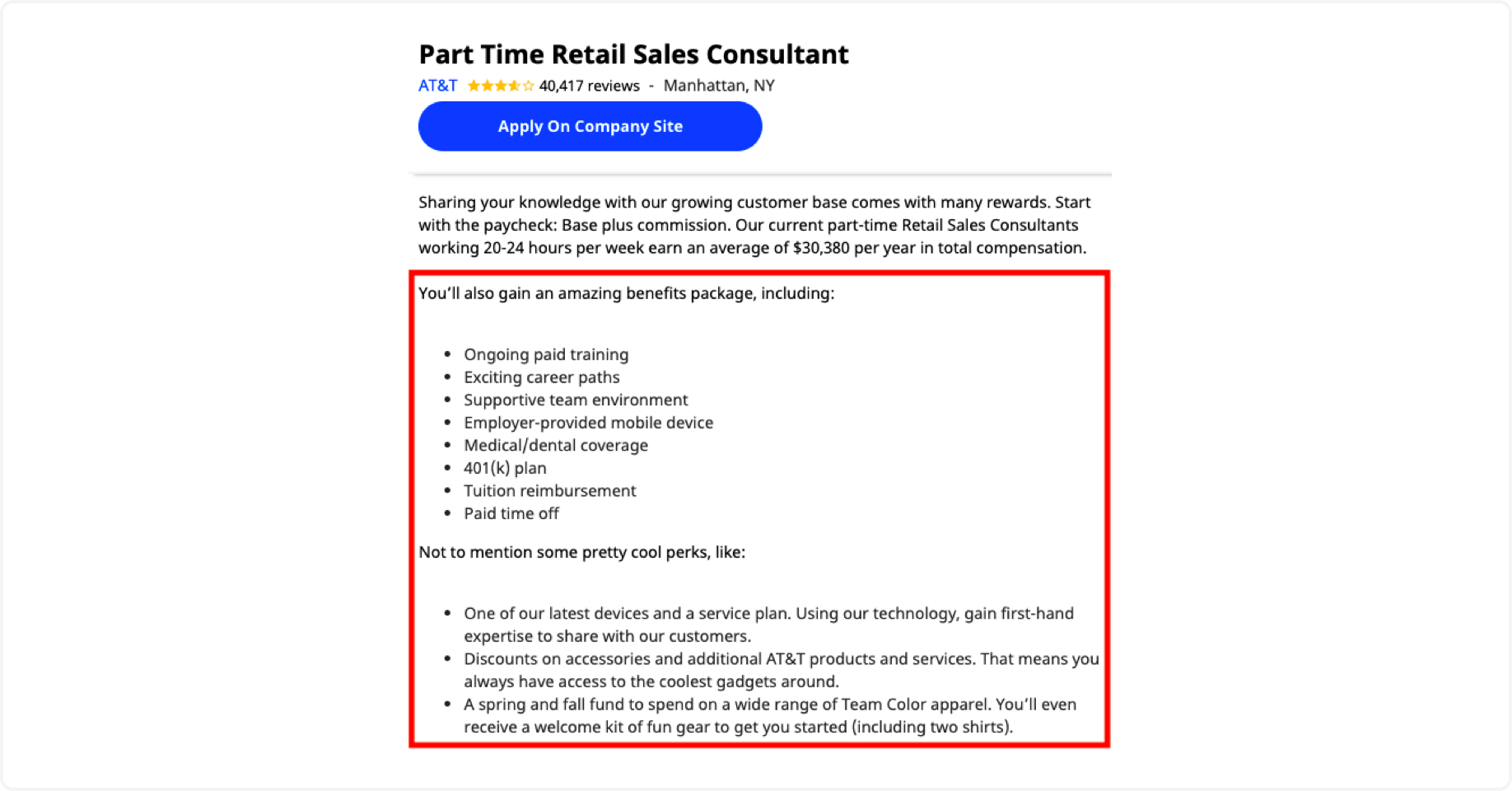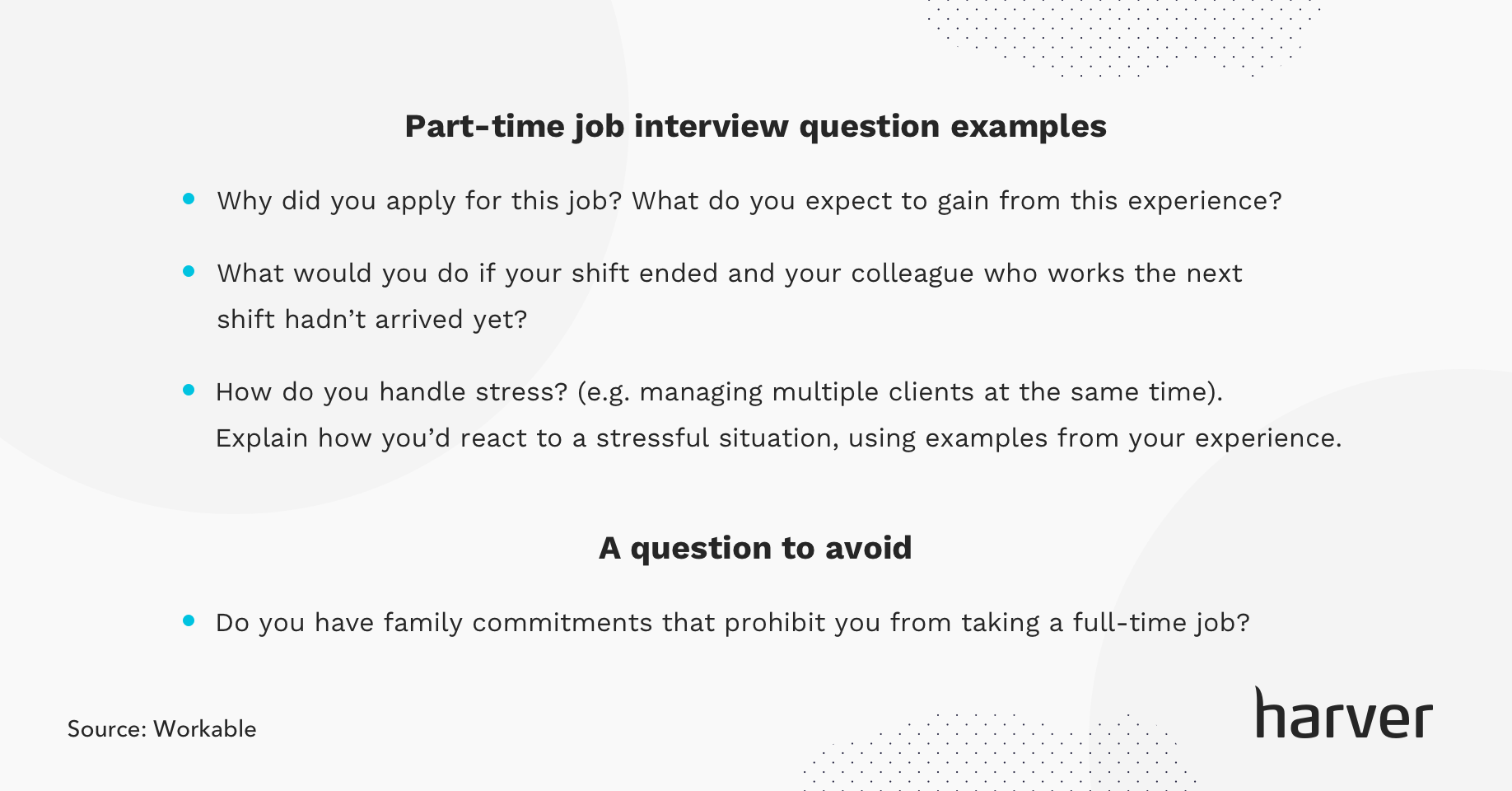Businesses in every industry hire part-time employees at one point or another, mainly because of flexibility needs, to handle extra workloads or to work on specific projects. Part-time work is especially popular in the retail and hospitality sectors, but also in creative and cultural industries, and many others.
However, trying to fill these part-time positions comes with its own set of obstacles. This is true regardless of the kind of opportunity that you are offering up.
To begin with, the average job-seeker is often looking for a permanent role within your business. What’s more, your part-time employee ideally needs to be smart, experienced, and reliable. At the same time, they have to be willing to work for limited wages and benefits.
Hiring a part-time worker requires a little more thought than you might have anticipated. While it may require a more creative approach, it is still possible to employ capable part-time individuals.
To manage this, here are the top points you should keep in mind.
What’s in?
Like what you see?
Don’t miss out. Subscribe to our quarterly digest to get the latest TA and TM resources delivered right to your inbox.
1. Know the law
Before doing anything else, you first need to have a full understanding of what it means to hire a part-time worker. A full-time employee is someone who is expected to work between 35-45 hours a week, with average being 40 hours. In contrast, a part-time worker is someone who works less than that.
Thus, this means that the individual you wish to hire can work between 1 and 39 hours. It should be noted that this does depend on your organization. Does the average full-time employee in your company work less than 40 hours a week? If so, you will need to adjust your part-time worker’s hours accordingly.
This information is important from a legal standpoint but also matters to any part-time employee that you hire as well. You need to know the types of employment contracts you can offer to your part-timers, how their potential overtime would be handled, and also, what benefits they are entitled to.

Over
27 million
people work part time in the US.
Source: Statista
Part time work in the US is common across industries and there is a substantial talent pool to be reached.
2. Make flexibility a focus
Before you actually begin the hiring process, it is a good idea to consider what the average part-time employee wants. The first question to ask is, why would someone choose to work part-time? In many cases, it is because individuals have other responsibilities.
These part-time workers may be students, entrepreneurs juggling their own business, retirees or people family commitments. Due to this, one of their main concerns is flexibility. This is precisely how you can appeal to these individuals.
For instance, do you want your part-time employee to work during business hours or outside of them? How much in advance will they receive their schedule? Also, can certain parts of the job be carried out remotely? The more flexibility you can offer to potential candidates, the better your options will be.

88%
of job seekers consider flexible hours to at least some degree when looking for a job.
Source: HBR
Flexibility is very important to job seekers, especially to those who look for part-time work. Let them know how your schedules could match right from the start.
3. Write accurate job postings
Many employers tend to drop the ball when writing part-time job descriptions. This is because greater weight and importance is given to full-time positions. Nevertheless, if you want to hire individuals who are qualified for the posted job, it is imperative that you craft a good job description.
So, what should a part-time job description contain?
Highlight that it is a part-time job
This may seem like a rather obvious thing to do, but many companies don’t clearly articulate what they are looking for in a part-time employee. Failure to be specific will result in confusion and a lot of frustrated candidates. Not to mention, you will have to deal with an influx of pointless applications.
Thus, mention the term “part-time” in the job title. For good measure, include it at various other points of the job posting as well. At the same time, it is important to mention how much value you place in this position. By talking about how critical the position is, you will help potential candidates to place it in higher esteem.
Mention expected work hours and days
You can’t afford to be cagey when it comes to the hours that you expect your part-time employees to work. As mentioned, there is a reason that most people choose to work part-time. In many instances, it is because they have other responsibilities. That’s why they do require some confirmation regarding how long they are expected to work each week.
On this note, you should mention how many days of the week you would like the candidate to work for your organization. If you have specific days in mind, mention these. In addition, also mention how many hours the employee is required to work each week. This information can impact the quality of the candidates that you attract.

This job ad from Selfhelp placed on Indeed states that it is part-time and 20 hours a week right in the title. In the summary, it specifies the requirements.
Outline required education, skills, and experience
Each position – even part-time ones – have certain required skills, even the most basic jobs. In your job postings, you should always highlight the traits, educational achievements, and experience that you are looking for. This information makes it easier for candidates to determine whether or not they are suitable for the job.
Now, this becomes especially important when you are hiring for specialized positions. For instance, it is becoming more commonplace to hire part-time lawyers in both small and large companies. However, considering the very nature of this job, you will need to hire competent and qualified individuals.
In this scenario, you will then need to select someone who has passed the New York bar exam or an equivalent. They must also have enough experience under their belt. By carefully outlining each of these requirements, you can increase the chances of the most suitable candidates coming forward.
Clearly define duties
Part-time workers need to know exactly what kind of role they need to fulfill within your company. Once again, these details allow a particular candidate to decide whether they have the capacity or the desire to perform such a function. You need to list out the specific duties they will be expected to carry out in your job posting.
This is why you should always do some research on that particular position before constructing the job description. Ask knowledgeable employees exactly what is expected of the person within that role. Such information will have the added bonus of giving you insight into what kind of person you should hire as well.
Mention employee benefits
Part-time workers often don’t receive the same kinds of benefits as their full-time counterparts. As a result, you will need to frame the job position in a more positive manner. In short, you will need to outline what kind of opportunities or rewards will be a part of the job.
Of course, if you can actually include proper employee benefits, this will certainly be appealing. Consider benefits and perks like paid vacation days, employee discounts, or paid training. This is another consideration that you will have to make before you post the job description. Keep in mind that a little bit of incentive can go a long way.

AT&T lists benefits and perks of their Part-Time Retail Sales Consultant role in a comprehensive way, so that potential candidates can learn right away what is in it for them.
- White paper
Before you continue!
Don’t forget to grab your free copy of our new white paper on the digital transformation of retail volume hiring. Learn about:
- The challenges currently shaping the retail volume hiring space
- How to align your recruitment strategy with today’s reality by adopting technology
- The four building blocks of a fully digital recruitment process

4. Know where to post
You want your job posting to be seen by as many qualified people as possible. However, placing the advertisement on a popular site isn’t necessarily the answer. This is because people who are looking for part-time work will not necessarily use the same platforms as full-time candidates.
To ensure that your posting is seen by the right people, focus on sites that cater specifically to part-time workers. As the number of freelancers has risen, there are now niche websites for such workers. So, make sure to target these above all else.
There are several advantages to using these smaller sites. To begin with, you are more likely to find candidates with the right qualifications and skills. Furthermore, these individuals will have experience in part-time positions and will be aware of what is expected of them. Last but not least, you will not have to worry about having to sort through unrelated applications.
Here a few job sites you could consider for posting your part-time roles next to your usual go-to job boards:
5. Select with intent
There are many employers who can get rather lax when it comes to the hiring process. Once again, this is because they underestimate the importance of a part-time position. Nonetheless, you need smaller jobs to be carried out with precision and with a high quality of work as well.
This is why you should put potential part-time candidates through a similar process as full-time workers. So, examine your current selection procedure. Then, identify which elements can be applied to part-time workers and which ones you can disregard. You will then have your hiring process outline.
For example, consider including questions about candidates’ availability in the application. That way, you can only easily pre-select candidates who are available when you need them.
You should also avoid rushing the interview process. Although it can be tempting to hire an individual after just one meeting, this can be a dangerous tactic. It can often be difficult to really understand the character or the capabilities of a candidate after a single interview.
Therefore, if you feel like a certain candidate has potential, make sure to interview them at least once more. Now, depending on the number of individuals that you have narrowed down, this can seem like a rather time-consuming process.
To reduce some of the workload, you may want to begin with a phone interview or even a virtual interview. If a candidate seems like a good match, then you can meet them in person. Depending on how you feel about them, you may want to have other relevant members of the company involved and set up a peer interview.
When interviewing someone for a part-time position, keep their job requirements in mind. For instance, if the position entails problem solving or organization, ask questions related to those skills. This will give you a better idea of whether or not a potential candidate has the qualities that you are looking for.

Consider including part-time job-specific interview questions in your interview process.
6. Always keep looking
In many cases, employers only begin to actively search for candidates when they need them. At that moment, you are limited by people who are available for the position. So, even if you do end up hiring someone, it doesn’t necessarily mean that the search is over.
When it comes to part-time candidates, it is always good to be on the lookout. Inform your managers or other relevant employees that you are considering individuals who meet certain criteria. This way, you will be able to build up a network of potential candidates simply through word of mouth.
Social media has also made it easier for employers to find and target certain individuals. So, if you do find a capable and resourceful individual, make a note of them. You will then be able to snatch them up when their current contract has ended.
This advice can be carried over to the people you will be interviewing for your current position as well. In some cases, you may meet a candidate that you really like, but who isn’t a good fit for the role you are hiring for. Rather than disregarding them completely, keep their profile in your talent pool. Should a relevant position open up, you will know exactly where to look.
Over to you
It is clear that there is more to hiring part-time employees than meets the eye. Just as with any full-time role, if you want to employ the right part-time employees, you do need to make some effort. Fortunately, the above guidelines do paint a more comprehensive picture of what you need to do to succeed. Don’t hesitate to refer to these the next time that you need to hire a part-time worker!
| About the Author: Leslie Sherman has been an integral part of hiring teams for over a decade. During this time, she has fine-tuned her approach to hiring the best individuals for the jobs. This has allowed her to ensure a better fit between company and employee and reduce the rate of turnover across the board. |
Ready to transform your hiring process?


